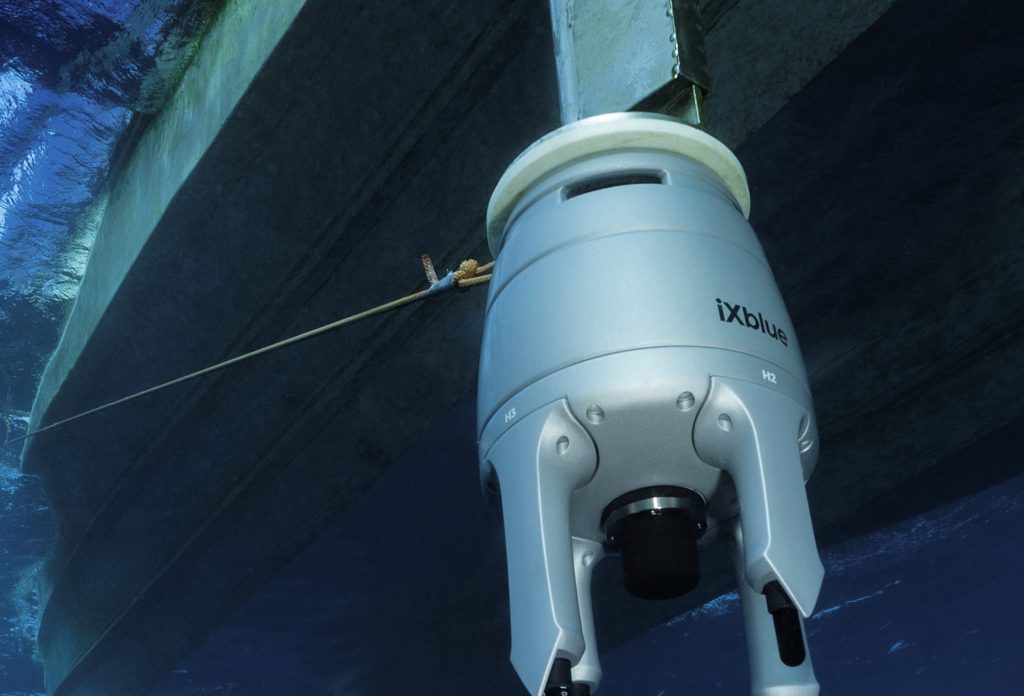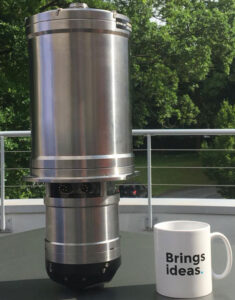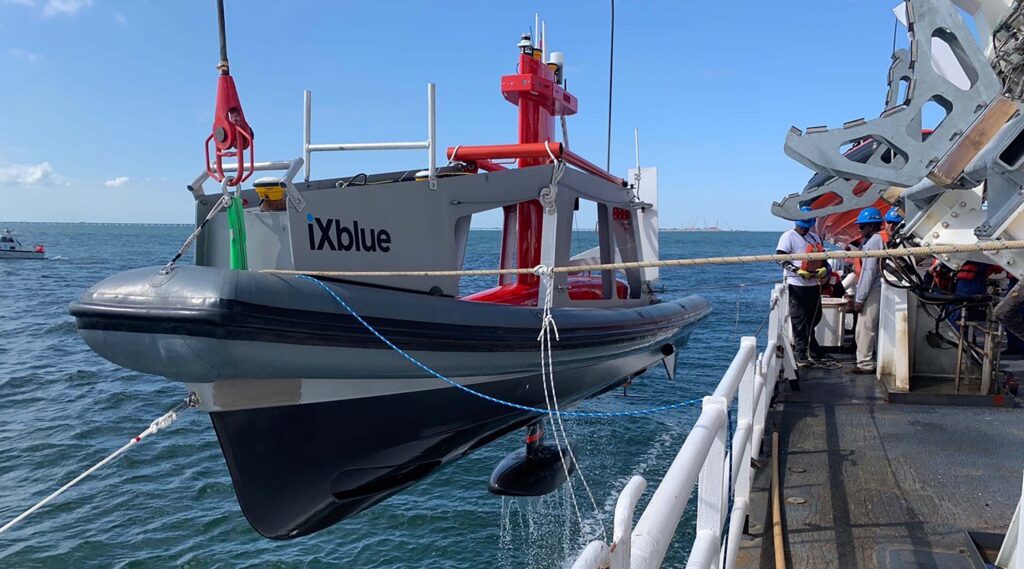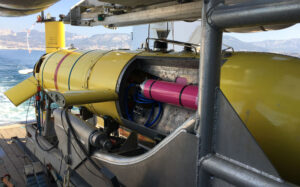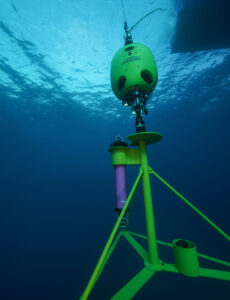- Maritime
Bringing operational efficiency to the Energy industry
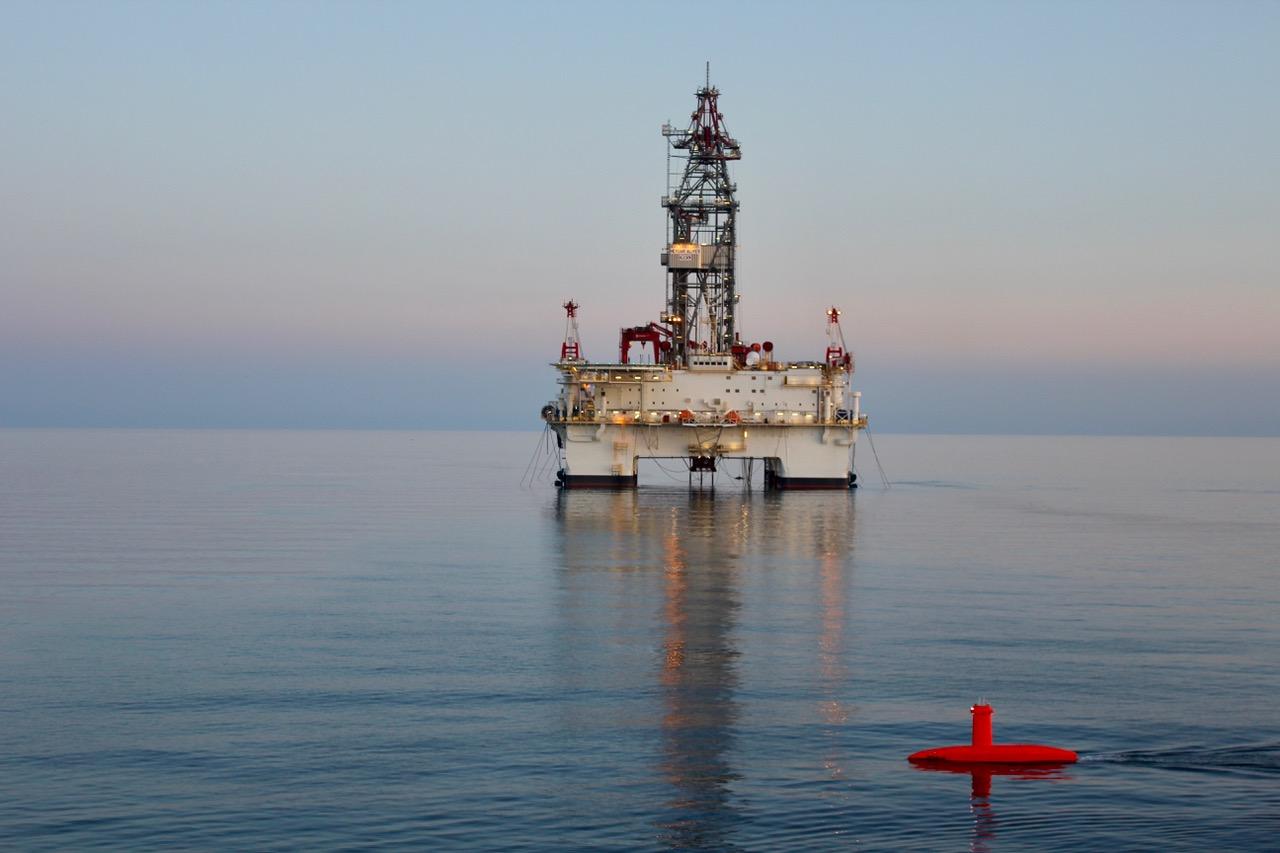

Companies operating in the energy industry have been looking for ways to increase the efficiency of their operations and reduce their costs for many years now. iXblue a major provider of advanced marine and autonomy technologies is playing a central role in the advancement of operational efficiency.
Providing innovative systems and solutions devoted to inertial navigation, subsea positioning, underwater imaging, and shipbuilding, iXblue’s strategy has always been focused on creating more added-value and efficient solutions. Olivier Cervantes, Vice President Energy Market explains how iXblue’s solutions are enhancing productivity and reducing operational time.
The aspiration of any successful supplier is to provide what the customer wants. In today’s market, this typically translates as lower costs, either directly, or by reducing operational time but with no compromise on performance, reliability or QHSE (Quality, health, safety, environment). This is where iXblue can provide a major differentiator and a value to their customers.
“We trust that operational efficiency will be brought by the development of reliable autonomous systems and remote control onshore. At iXblue we have always believed in autonomous technologies and created navigation systems for autonomous underwater vehicles at a time when they were still at the research stage. That was back in 2001, with the launch of Phins, the most compact INS of its performance range, built on our expertise in FOG technology. We have, since then developed a complete technological ecosystem that enhances the autonomy of underwater vehicles, from navigation and underwater positioning, to subsea imagery and artificial intelligence.”
And while technology enables a big part of value creation, it is not the whole picture. The product also needs other invisible attributes such as embarked software, interfacing, electronics, technical support, maintenance and a wide variety of other services to produce a comprehensive package.
“What a company should aim for is not just a piece of equipment but a holistic solution,” said Cervantes. “This is equally important at large scale down to component level. All subsea devices, for example, consist of numerous individual subsystems, which may work well independently but that bring valuable added-value when they are joined together. If part of the system such as the interfacing or connectors is the wrong choice, then this potentially impacts unfavourably on the entire product. This is why we believe that integration is such a crucial part of every system.”
“On a larger scale, we believe vertical integration (where the company is responsible for all the processes in its supply chain) is the best way forward in order to push the limits of the technology and its performances.“
Vertical integration
“On a larger scale, we believe vertical integration (where the company is responsible for all the processes in its supply chain) is the best way forward in order to push the limits of the technology and its performances.”
Few companies, however, can deliver all the sensors a customer requires, and some companies may have their own preferred suppliers for specific components.
“At iXblue, we master the full value chain of the technologies we develop. This translates for example, for our INS (Inertial Navigation Systems), into the in-house design and manufacturing of every components that are integrated into our systems, including our own Fiber-Optic Gyroscopes (FOG) and accelerometers. This vertical integration also ensures our independence in relation to strategic suppliers and allows us to offer ITAR-free products that are easy to export.”
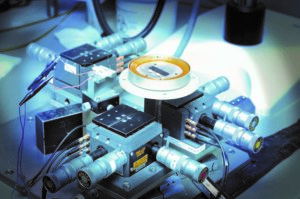
iXblue has pioneered the FOG technology |
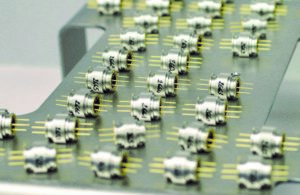
iXblue’s manufactures its own accelerometers |
“We also think it is important to be open to competitive technologies” said Cervantes. “While employing a proprietary format or protocol might have advantages, for the customer this is incompatible with free market selection. And this is why we decided to make our systems open to third-party products. A couple of years ago, for example, a market research suggested that there was to be a gradual demand for greater integration between the INS and the Doppler Velocity Log (DVL).”
The INS is a very important sensor in the computation of the navigation data, in order to get the best performance, it is often integrated with other sensors such as GPS on surface or underwater acoustic positioning systems (USBL for example) or DVL (Doppler Velocity Log). When operating underwater during extended periods of time, a stand-alone INS will eventually accumulate navigation errors leading to drift. It is to limit this drift that INS use external aiding.
“Some companies incorporate enclosed systems, so if a customer wants an INS, they have no alternative but to use the same company’s DVL for instance. We use the opposite approach so that our architecture is equally compatible with our competitors. For instance, all our INS can be tightly coupled with any DVL on the market, enabling users to choose the INS and DVL combination the most adapted to their operation in terms of accuracy, volume, weight and altitude, with no compromise on the ease-of-use.”
“We furthermore provide a post-processing software, Delph INS, that allows the user to employ non-calibrated INS and DVL, and recover the calibration value afterwards. This is very convenient when a DVL is damaged and needs to be replaced. It allows the use of two non-calibrated sensors, aligning the system afterwards.”
Reliability
Reliability is also a key aspect, particularly in the extreme environments of the subsea industry. iXblue provides, among other products, a comprehensive range of surface and subsea gyrocompasses and Inertial Navigation Systems that are trusted worldwide for their high accuracy and reliability.
“We have been providing Inertial Navigation Systems such as FOG-based INS for more than 20 years. Our INS are now used in highly challenging environments such as subsea and long-duration space applications, testifying of the robustness and reliability of the systems we produce.
iXblue INS have incidentally been qualified to withstand the extremely harsh environments of land defense, with its extreme vibrations, shocks and temperature changes, and are now being operated by over 60 armies and navies worldwide. This robust technology iXblue has developed thus benefits the company’s customers on the Energy market.
In total, iXblue’s Inertial Navigation Systems have accumulated over 3 million functioning hours. Using standard telecom-technology components with proven lifetime and reliability, iXblue’s units – including their three Fiber-Optic Gyroscopes, three accelerometers and system electronics – have demonstrated over 100 000hrs mean time between failure (MTBF) with the FOG itself boasting an MTBF higher than 500 000hrs.
“Having so many systems on the field for so many years, we know their behaviour well. And thanks to this knowledge, cumulated to the high field-proven MTBF of our systems, we are now confident enough to quote an almost unprecedented 7-year warranty on every subsea system that goes out.”
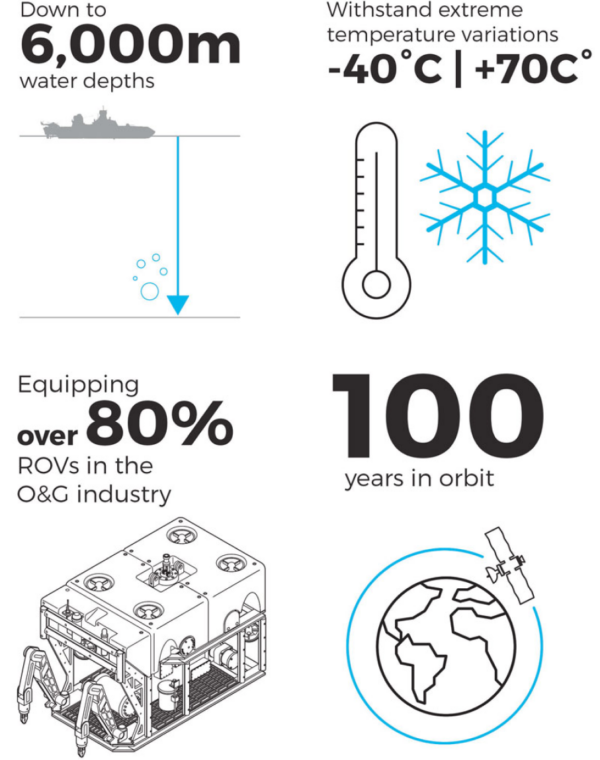
Autonomous Systems
One of the greatest potential cost savings that a subsea operation can accrue, comes from automating systems. This is particularly true of unmanned vehicles that can be pre-programmed or controlled remotely from shore. This prompted iXblue to develop DriX, an autonomous Surface vessel integrating sensors in a subsea gondola and able to conduct various survey and subsea constructions operations at speed and with high resolution data. Pre site surveys, pre lay, as laid, touchdown monitoring, structure installation, AUV tracking and communication, hydrography and geophysical surveys are done faster, better and safer thanks to this disruptive technology.”The development was the result of a contract in New Zealand in which we were required to survey an area and produce a hydrographic chart,” said Cervantes. “The customer wanted to bring down the cost of the survey and we realized that no satisfactory solution existed on the market that would meet the requirements of the mission.
iXblue thus decided that they needed to manufacture their own asset that would be a game changer for the hydro market. The company’s team of marine survey specialists worked closely with their own Shipyard in France to design and manufacture a dedicated and specialist survey autonomous vessel offering unique sea keeping capabilities, able to survey in very high sea states and coming into a complete package with its launch and recovery system. This is how iXblue came up with DriX, in only 1 year, from concept to launch.
“The outcome was brilliant, with very high data quality thanks to sensors deployed in a gondola located 2m below the surface. While it was originally intended just for in-house surveys, we followed the company’s ‘open’ ethos by making it available to customers such as Bibby HydroMap, who quickly saw its value. We also demonstrated the system in Azerbaijan for a ‘boxing’ operation with Total, where it delivered decimeter accuracy in 10 minutes and in 500 m WD. More recently, DriX has proven to offer high efficiency compared to traditional ROVs for pipelaying operations in Mexico. During this mission, DriX was indeed able to provide high resolution imaging 4 times faster than traditional data acquisition by ROV in up to 100m water depths.”
But bringing more autonomy to the offshore market also goes through enhancing the autonomy of the subsea vehicles themselves.
“Navigation is an essential part of a vehicle’s autonomous capability. Thanks to our advanced and scalable INS, as well as our acoustic positioning systems, we are bringing more robust autonomy to subsea platforms and are highly successful on the AUVs market. And this is not only due to our FOG technology, but also to the advanced algorithms our teams of engineers are developing. Data is key to reliable navigation, and we can think of an AUV as being a mix of a lot of very good sensors, including DVL, GPS, USBL and LBL. The challenging part to make the platform fully autonomous, is to merge all those data to provide a reliable navigation capability. Thanks to our advanced algorithms and Unscented Kalman Filter, our INS have now become the prime sensor fusion engine, from a navigation, position and timing standpoint. They truly bring more robust autonomy to the platform.
Partnership
“Our basic philosophy is do what we do well, and buy in third-party input such as Lidar, cameras, multibeam echosounders (MBES) etc, in order to provide the solutions we wish to deliver to our customers. We see great advantages, however, in establishing partnerships which not only help us develop new complementary technologies, but allow us to have an input at an early stage and guide the development of the tools. “
iXblue is thus currently engaged in many partnerships that will bring added value to their customers in the future. Recently for instance, the company’s established a partnership with Forssea Robotics to collaborate on an ‘Agile LBL’ solution. It combines Forssea’s Atoll, an observation-class ROV that offers autonomous docking capabilities, with DriX, on which iXblue’s Gaps pre-calibrated INS and USBL acoustic systems mounted. Thanks to this agile solution that does not require heavy logistical support, iXblue and Forssea are providing up to 70% cost-savings compared to traditional methods.
“Another prime example of collaboration is the one we built with 2G Robotics to offer a new survey skid for Inspection Class ROVs.”
Using iXblue’s Rovins Nano Inertial Navigation System, with 2G Robotics’ ULS-500 Micro laser scanner and OBSERVER still camera, this new all-in-one integrated skid delivers high accuracy inspection capabilities on small ROVs, enabling survey and inspection on low cost assets.
“Overall, we believe that a revolution has to be brought about by all companies that are cooperating and sometimes competing beneath the surface, so that all the various skills needed can be used to reach a common goal: inventing and offering new innovating solutions to bring operational efficiency to the energy market.
